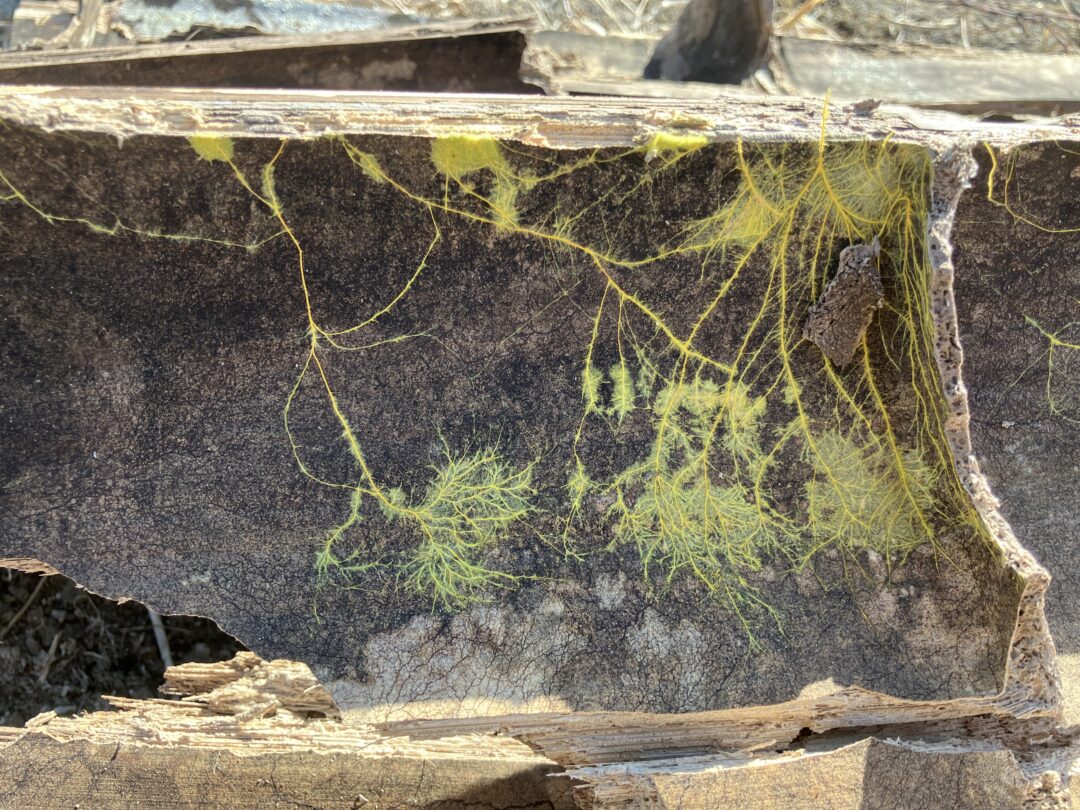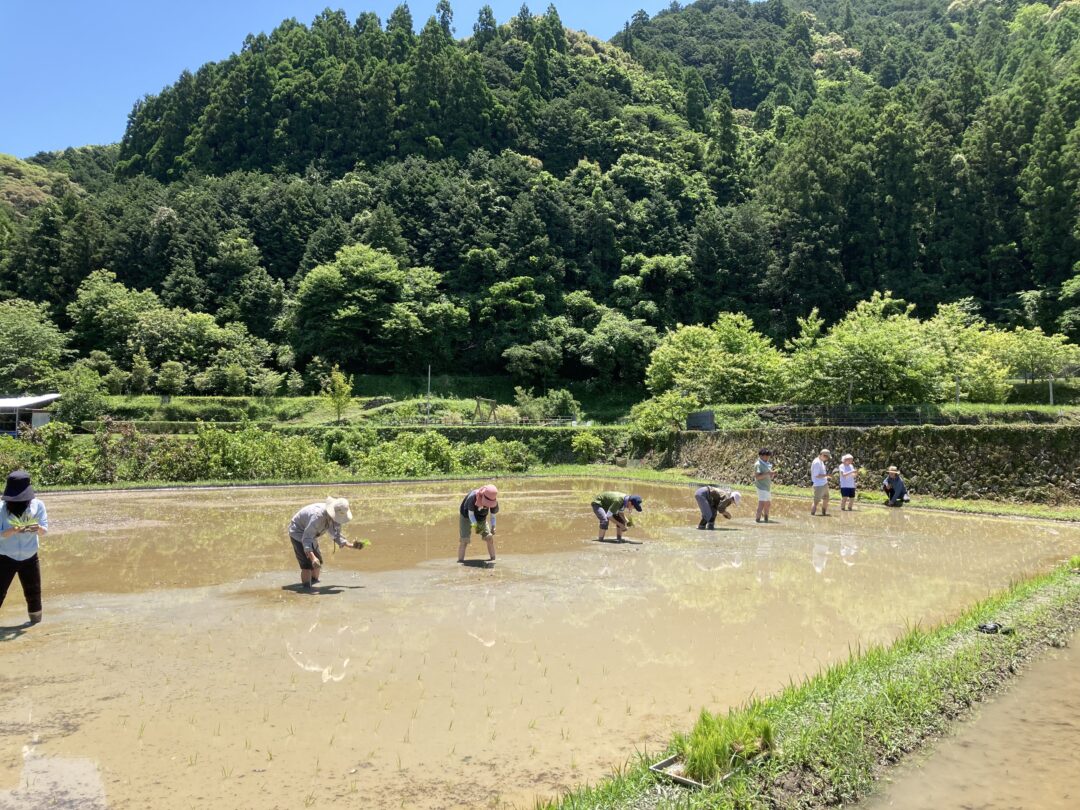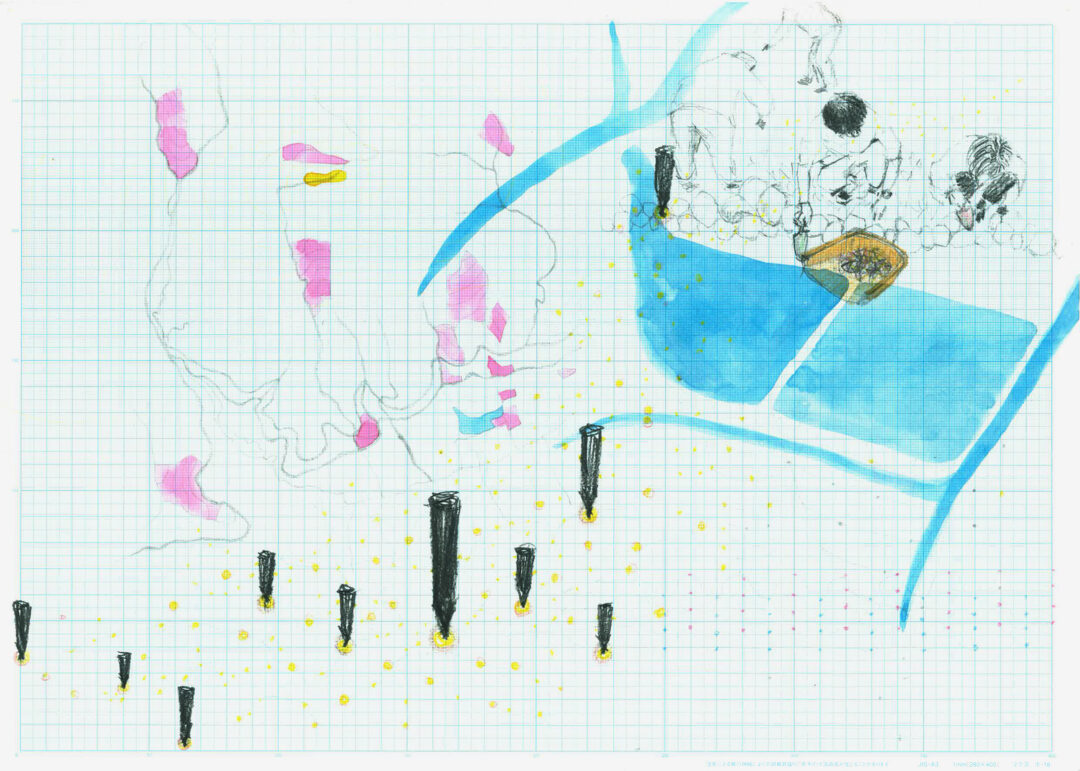“The permeating feelings of longing, yet the inability to reach or touch you. I stand at the foot of the Nirono mountains, gazing at you, thinking of you. You are as vulnerable as I am. A deep longing for the trees, plants, ancestors, mossy air, inhabiting animals, and the underground fungal webs and water passages, accompanied by a hint of shadowy feelings.” Takako Hamano

The exhibition I fell in love with Nirono mountains marks Takako Hamano’s first artistic spatial output during the course of the project development ‘Circular Niro,’ which has been unfolding since 2020 on a piece of land in Kochi, Japan that Takako inherited from her great-grandparents. It explores the weaving of relational elements inspired by regenerative actions that have been taking place in the Nirono field, interpreted through her artistic lens in relation to the Amstelpark setting. This exploration will unfold as a ritualistic spatial experience, inviting the audience to walk through it with the artist.
Circular Niro
Circular Niro is an ecological art project centered on “circular actions” undertaken by humans in collaboration with more-than-human entities. The project aims to revitalize Satoyama—a Japanese concept referring to the intersection of natural habitats and human habitation, encompassing rice fields, traditional houses, and mountains. Unlike the Western separation of nature and culture, Satoyama views these elements as a unified whole. The project takes place in Nirono, Kochi, Japan, where Takako Hamano, who is based in both the Netherlands and Japan, inherited a plot of land several years ago.
Circular actions include ecological revitalization activities such as cultivating and maintaining rice fields, restoring traditional houses, and maintaining valleys and mountain ridges to improve air and water circulation within the underground soil network. These actions primarily utilize natural materials, often locally sourced, ultimately contributing to healthier crops, environments, and human well-being. The flow of soil, water, air, consciousness, and materials, along with the care required to sustain these flows, are central themes throughout the project.
Hamano invited Zone2Source director Alice Smits to develop a collaborative art-science research program, which started with a research trip to Japan for 2 weeks in the fall of 2024 (supported by a travel grant Stimuleringsfonds). In January 2025 we held a first meeting with potential interested participants from the world of art, architecture, design and science at Zone2Source. This program aims to focus on an understanding of the relational landscape of the Nirono field from multiple perspectives: micro to macro, visible to invisible, and through the diverse lenses of Dutch and Japanese artists, designers, scientists, architects, engineers, farmers, foresters, and others.
Through this unique setting, Hamano and Zone2Source aim to explore artistic methodologies and interdisciplinary collaboration—shaking the field space—to break new ground in the Circular Niro project. The project engages various local generations, from the young to the elderly, as well as shamans, Shinto priests, and others, in exploring human and more-than-human collaborations to deepen our understanding of the natural and cultural complexities of this specific place.

Why?
While the Nirono field may seem geographically distant and culturally unique to Dutch researchers, it addresses a shared global concern—how to approach the relationship between nature and people in our time. The rapid economic growth following World War II, coupled with the adoption of modern and efficient lifestyles in the First World, has resulted in widespread soil degradation and a weakening of the ties between people and their work. Japan, with its millennia-old traditions of soil maintenance and fermentation culture, offers an intriguing test site, especially for research from a multi-species perspective. The Nirono field, with its extended timeframe for engagement and its physical space for experimentation, provides a fertile ground for creative practices using innovative approaches. These practices have the potential to directly impact the transformation of the field within the context of the existing community. Additionally, the project seeks to explore the role of art-science methodologies in situated and engaged practices that support equitable and sustainable futures for more-than-human communities.

het Glazen Huis